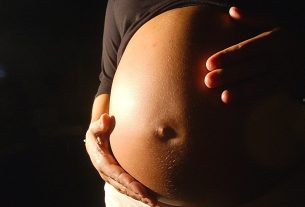Some ways to get pregnant with twins include medical treatments such as the use of medicines that stimulate ovulation or assisted reproduction such as artificial insemination or in vitro fertilization, for example, but also some factors such as a history of twins in the family or having a child after the age of 30 can help you get pregnant with twins naturally.
Twins happen naturally more frequently due to genetic predisposition, especially when the woman has cases of non-identical twins in the family. When a man has a twin brother, this does not mean that his partner will have twins, because the genetic factor is completely dependent on the woman.
If a woman wishes to become pregnant with twins, it is recommended that she consult a gynecologist to assess her health status and the possibilities of having twins naturally or undergo treatments to increase this possibility.

Probability of getting pregnant with twins
Not every woman can get pregnant with twins naturally, because the main factor for this to happen is that there is a genetic predisposition in the family, especially in the case of non-identical twins. In this case, it may happen that the woman matures 2 eggs at once, and has twin children, but not identical.
The chances of having identical twins are the same for all women, because in this case, initially there was only one egg that was fertilized by a sperm, but in the first hours of conception, it divided into 2, giving rise to two identical babies, not being influenced by genetics, occurring by chance.
Tips for getting pregnant with twins naturally
There are some tips that can help increase the chances of having two twin babies, but different ones at once, such as:
- Getting pregnant after age 30, as the production of follicle-stimulating hormone (FSH) increases as a woman ages. FSH is responsible for the development of eggs and increased production can lead to the release of two or more eggs and result in twin pregnancies.
- Getting pregnant between the ages of 35 and 40especially for women who have already had 4 or more pregnancies, increases the possibility of twin pregnancies;
- Have a BMI greater than 30, increases the possibility of having twins, as body fat increases estrogen levels in the body, stimulating the ovaries to release more than one egg. However, high fat levels in the body can increase the risk of cardiovascular disease, as well as pregnancy complications.
Furthermore, some foods such as yams and sweet potatoes can help a woman ovulate more and better, and increase the chances of pregnancy with twins.
It is important to always consult a gynecologist to assess the likelihood of getting pregnant with twins.
Facts not proven by science
Taking folic acid does not guarantee pregnancy with twins, because this is a dietary supplement recommended for all women who are trying to get pregnant or who are already pregnant to protect the formation of the baby’s nervous system.
Furthermore, eating more dairy products such as milk, yogurt, butter and cheese are good sources of calcium, but there is no scientific evidence that they can interfere with ovulation.
Sexual positions also do not interfere with the ability to get pregnant with twins because the most important thing is for the woman to have 2 eggs at the same time in the tubes and this cannot be achieved during sexual contact, as it is not because more sperm arrive that the woman will get pregnant with twins.
Main treatments for getting pregnant with twins
The main medical treatments that make it possible to get pregnant with twins are:
1. Use of medicines
Pregnancy medicines, such as clomiphene or letrozole, are not specifically recommended for women getting pregnant with twins. These medicines are prescribed by the doctor to stimulate ovulation, during fertility treatment, which lasts many months, and which must always be directed by doctors specializing in human reproduction.
2. Assisted reproduction
Some assisted reproduction treatments may be recommended and carried out by a doctor, especially in cases of infertility, but they increase the chances of twin pregnancy, and include:
- Intrauterine artificial inseminationin which sperm is placed directly inside the woman’s uterus, increasing the chances of egg fertilization, after treatment to stimulate ovulation;
- Fertilization in vitrowhich consists of bringing together eggs and sperm in the laboratory to form embryos, which are then transferred to the woman’s uterus to implant and result in pregnancy.
These treatments should only be carried out with medical indication and guidance, and after stimulating ovulation with medication. Check out other assisted reproduction treatments.
What is a twin pregnancy like?
Twin pregnancy is considered a high-risk pregnancy because there is a greater risk of premature birth and eclampsia, which is an increase in blood pressure, which can pose a risk to the woman and the baby. Understand better what eclampsia is and how it is treated.
Therefore, pregnant women with twins must take special care during pregnancy, such as attending all prenatal appointments and eating a balanced diet. Sometimes the obstetrician may recommend that the woman rest around 30 weeks of pregnancy, so that the babies can grow and gain enough weight to be born healthy.
Difference between identical and fraternal twins
There are two types of twins, identical twins, which are identical, and different or non-identical twins, which are fraternal twins.
In identical twin pregnancies, the babies share the same genetic information, with only slight differences from one another, such as their fingerprint, for example. In this case, the egg was fertilized by just one sperm and the egg formed divides into two, giving rise to 2 identical babies.
But in a pregnancy with fraternal twins, the babies are different, and can be a boy and a girl, for example. In this case, there was maturation of 2 eggs that were fertilized by 2 different sperm.
In this way, twins can be:
- Univitelinos: the babies share the same placenta and are identical;
- Bivitellines: each baby has its own placenta and they are physically different, that is, not identical;
Although it is uncommon, there is the possibility of a woman ovulating again a few days after fertilization, becoming pregnant with twins days or weeks apart. In this case the twins will be fraternal.

Sign up for our newsletter and stay up to date with exclusive news
that can transform your routine!
Warning: Undefined array key "title" in /home/storelat/public_html/wp-content/plugins/link-whisper-premium/templates/frontend/related-posts.php on line 12
Warning: Undefined array key "title_tag" in /home/storelat/public_html/wp-content/plugins/link-whisper-premium/templates/frontend/related-posts.php on line 13




